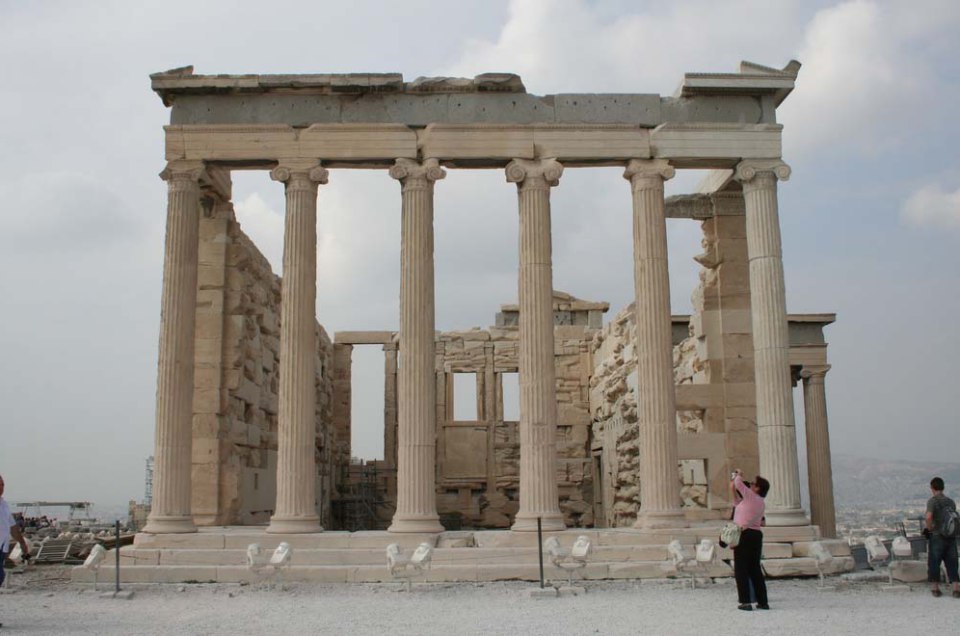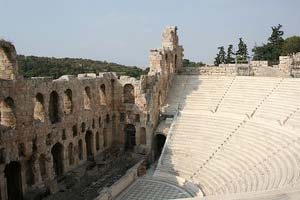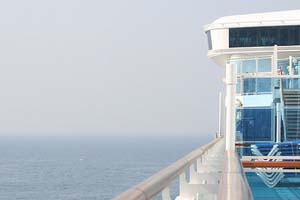The Mediterranean is filled with natural and historical wonders, a sea of aquamarine waters surrounded by ancient civilizations. And perhaps the best way to see it all is aboard a cruise ship, where you can tour the best of the Med and sleep in the same place each night, no unpacking and re-packing required. But cruisers must make sure to choose the right trip. What works for a young family may not suit a retired couple—from ship to length of itinerary to selected ports of call, Mediterranean cruises can vary widely, and it’s important to make choices that suit your interests and needs.
For younger families, especially those new to cruising, a shorter itinerary may be a good idea. And choosing a ship with the right amenities is of particular importance when travelling with kids in tow. Royal Caribbean International, a top name in the cruising world, offers an ideal trip for young families—eight days in the eastern Mediterranean, on-board the Navigator of the Seas. It’s a huge vessel, with more than enough activities to keep the whole family busy while aboard. They offer pirate and princess parties, toddler art programs and a Fisher-Price toy lending program for your littlest ones, video games, a rock climbing wall, and even an ice skating rink for tweens and teens, plus a wine bar, casino, shopping and even golf for Mom and Dad.
However, despite all these amusements, you probably won’t be spending much time on the ship—the trip includes some very spectacular scenery and top sites from two of the world’s greatest ancient civilizations, Greek and Roman.
Although just one week in length, almost every day features an exciting port of call, from the ruins at Ephesus, one of the Seven Wonders of the Ancient World, to Iráklion, the capital of Crete, a ruggedly beautiful Greek island that boasts both fabulous beaches and a range of white-capped mountains that run down the island’s spine. The shops and food stalls that line Iráklion’s bustling streets offer delicious pleasures, from olive oil to honey to Mediterranean wines and cheeses, while Knossos, a historic site dating back to 1700 BC not far outside the city, offers a feast for the eyes. Once a great palace and religious center of the Minoans, the oldest of Greece’s ancient civilizations, significant portions of Knossos have been restored to their original glory. It’s a wonderful labyrinth of theatres, staircases and rooms for living and working. Perhaps the biggest highlight: Lovingly reconstructed frescoes of the Mediterranean. appear throughout the site, depicting—with great sophistication and robust colors—elements and activities of Bronze Age life.
The cruise includes two great cities—it begins and ends in Rome, and stops near the midway point in Athens. Make sure to take time to explore each of these, from the Coliseum, Vatican City and Trevi Fountain in Rome, to the Acropolis, Temple of Zeus, Byzantine churches and trendy boutiques of the Plaka in Athens. Located directly beneath the Parthenon, which sits high atop a craggy precipice and is drenched in white light after dark, the many sidewalk cafes of the Plaka are also a wonderful destination for some al fresco dining.
For mature cruisers with the time to explore more of the world, Azamara Club Cruises offers a 14-day Western European itinerary, on board the Journey, a ship small enough to feel navigable and manageable, hosting just 694 passengers (a fraction the size of the 3,000 passenger mega-liners that are now quite common). Azamara has become legendary for sophistication and service, and the Journey features more verandas than most cruise ships, plus butler service for every single stateroom. Take part in daily programs such as wine or champagne tastings, relax in the piano or martini bar, or sign up for some fabulous treatments at one of the most luxurious spas on the high seas.
The cruise departs from Copenhagen and takes in some of Western Europe’s top highlights, from Paris to Bordeaux to northern Spain. But it saves the best for last, finishing up in the Med. Perhaps the most quirky port of call on the itinerary is Gibraltar, one of the most curious places you will ever see. Geographically surrounded by Spain, the British have long controlled Gibraltar, which, due to its seaside position and imposing Rock, has been of great strategic importance. Facing an often hostile neighbour on three sides, Gibraltarians frequently turned inward, boring a fascinating network of tunnels into their famous Rock, even developing an entire hospital and auditorium (complete with tidy rows of audience seating) inside St. Michael’s Cave. And make sure to visit the free-roaming small Barbary Apes that make the top of the Rock their home—if you’re brave, you can invite one onto your head or back for a unique photo.
Barcelona is the final stop, a beautiful seaside city often known as the Jewel of the Mediterranean. You should probably visit the Sagrada Familia, Antonio Gaudi’s still unfinished masterpiece, or the Museu d’Art Contemporani de Barcelona and the Centre de Cultura Contemporania de Barcelona, the city’s two excellent contemporary art museums. But there’s really no better way to spend an afternoon than taking a table on La Rambla, Barcelona’s famed central shopping street, ordering a jug of Sangria—complete with the requisite wooden spoon for mixing—and maybe some tapas, and sitting back to watch the world go by.



